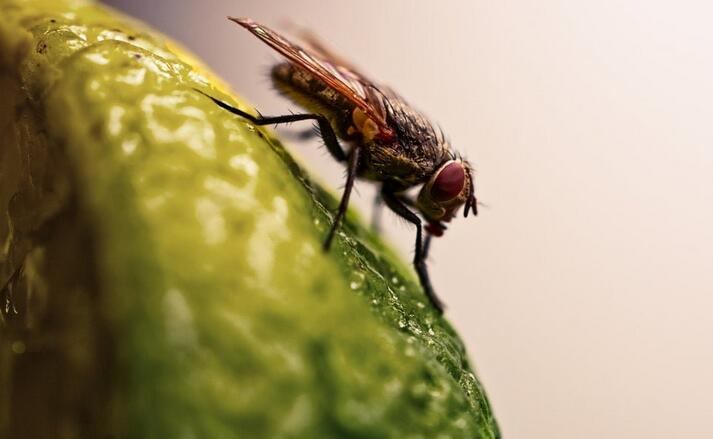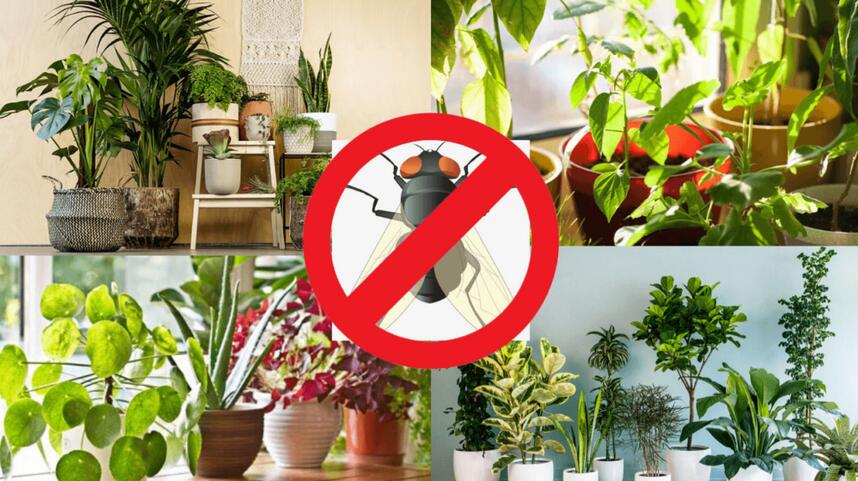Flies can be a pesky and frustrating problem, especially during the summer months. These buzzing insects are not only annoying but can also carry harmful bacteria and diseases. Luckily, there are several effective ways to get rid of flies and keep them away. From natural remedies to chemical solutions, we’ve got you covered.
In this article, we’ll explore the best methods for getting rid of flies both indoors and outdoors. Whether you’re dealing with a small infestation or a full-blown invasion, you’ll find practical tips and tricks to help you eliminate these unwanted pests. So, if you’re tired of swatting and shooing away flies, read on to discover how to get rid of them for good.
What are Flies?
Flies are small insects with two wings and antennae. These small, flying creatures usually appear in homes and yards. They land on garbage and excrement, lay their eggs, and they’re young and grow up to continue the cycle.
Flies are attracted to food, moisture, and warmth. They feed on human food, carrion, garbage, and decaying matter. They reproduce quickly and can lay up to 500 eggs at once. Flies can live up to one month and have a life cycle of only 10 days.
Flies can also spread disease, cause allergic reactions, and spread bacteria, viruses, and other pathogens on surfaces where they land. They can also transport and spread harmful diseases such as food poisoning and dysentery.

What Causes Flies Indoors?
One of the main reasons that fly enter homes is they are looking for food. If there is food available inside, they will stay and lay eggs. Keeping your home clean and free of food scraps is essential.
Another reason flies might enter your home is if there is a lack of sunlight or moisture. Drain flies might seek shelter indoors if there is no place to lay their eggs outside. You can help prevent this by ensuring no cracks or openings around your doors and windows.
Finally, some drain flies might enter your home if it is warm inside. This can happen during winter when people leave their windows open to let in the heat.
What Causes Flies Outdoors?
Many things can cause flies to swarm outdoors, but the food is one of the most common reasons. If you have a lot of food out in the open, it attracts flies and swarms around it. This can be a problem if you’re trying to enjoy a picnic or outdoor meal.
Improper garbage disposal is one of the most common causes of flies outdoors. When people do not properly dispose of their trash, it creates an environment where flies can thrive. The garbage can become a breeding ground for fly eggs, and when the eggs hatch, the flies will be looking for food.
Another common cause of flies outdoors is over-stocked animal feeders. When people have too many animals in their yards, they often put too much food for them. This can create an environment where flies can breed and multiply.
The last common cause of flies outdoors is stagnant water. If a puddle or pond on your property has not been cleaned up, it can become a breeding ground for flies. They will lay their eggs in the water, and you will have a fly infestation when the eggs hatch.

How to Get Rid Of Fly Indoors with 8 Natural Remedies
Now that you know what causes flies, you can take steps to eliminate them. You can get rid of flies in a few different ways, and we will go over some of the most effective methods.
1. Use A Fly Swatter
It can be summertime or any time of year. Flies are pesky little creatures that seem everywhere, especially indoors. There are a few ways to get rid of flies inside your home. One way is to use a fly swatter.
A fly swatter is a tool used to swat or kill flies. It comprises a thin piece of material, such as cloth or plastic, attached to a handle. The material is usually shaped like a large square or rectangle. When you see a fly, you can quickly swing the fly, swatter at it, and kill it.
2. Buy An Indoor Light Trap
An indoor light trap is a device that uses ultraviolet light to attract flies. Once they’re drawn in, they get stuck to a secret sticky trap. This is a much better solution than fly paper because the flies are hidden from view.
Many indoor light traps plug into an outlet, making them easy to use. You can place them at the height that flies like to hang out in (4 to 6 feet off the ground). If you have any windows in the area, make sure you place the trap away from them, or you will just be attracting more flies!
3. ACV And Plastic Wrap Trap
Make your fruit fly trap with a glass jar, apple cider vinegar, and plastic wrap. The acidity in the vinegar attracts fruit flies; however, once they enter the jar through one of the small holes you created with a sharp object-they can’t escape!
So pour some ACV into your designated glass container, then stretch tight plastic wrap over the top. Keep it snug against the edges of the bowl using a rubber band before finally puncturing several tiny breathing holes for our little friends with whatever pointy device you have on hand.
Place the trap in an area where you’ve seen fruit flies congregating and wait for them to be caught. You may even want to set out more than one trap if you have a terrible infestation. Within a few days, you should start to see results.
4. Paper Cone Trap
To attract fruit flies, put a bit of vinegar and a piece of ripe fruit in a jar. To make the narrow opening of the cone down, roll some paper into a cone and stick it into the jar. The rotten produce’s smell will entice fruit flies to enter, but the cone part of the trap makes an exit difficult for them.
If your trap is filling up with flies quickly, change out the vinegar and fruit every few days. Also, don’t forget to dispose of dead insects properly; don’t just leave them lying around!
5. Beer Trap
Fruit flies are pesky little creatures that can quickly overrun your home. While there are several ways to eliminate them, one of the simplest and most effective is to use beer as bait.
To make a beer trap, add a couple of drops of dish soap to an open bottle of stale beer. The soap will help to drown the flies, and the stale beer will attract them. Place the bottle in an area where you have seen fruit flies gathering, and wait for them to swarm.
The beer trap is easy to eliminate fruit flies without harsh chemicals. It’s also a great way to recycle old beer bottles.
6. Compost Bowl Fly Trap
The best way to make a DIY compost bowl fly trap is to use fruit or vegetables that are starting to rot. Flies are easily attracted to the smell of rotting things, so they will be drawn to your trap.
To make the trap, start by cutting a piece of fruit or vegetable beginning to rot. Please place it in the bottom of a bowl, then add some compost on top. The flies will be drawn to the compost and get trapped when they try to fly out of the bowl.
7. Use Essential Oils
If you’re looking for a natural way to get rid of flies, consider using essential oils. Essential oils are a great way to repel flies because they contain natural compounds that repel insects.
Many essential oils can repel flies, but some of the most effective oils include peppermint, lavender, citronella, lemongrass, and rosemary.
To use essential oils to get rid of flies, you can use a diffuser or make your fly repellant.
8. Diffuser or fly repellant
If you want to use a diffuser, add a few drops of any of the above-mentioned essential oils to the water and diffuse it in the area where you want to keep flies away.
To make your fly repellant, you’ll need a small spray bottle and 5-10 drops of each of the following essential oils: peppermint, lavender, citronella, lemongrass, and rosemary. Add the essential oils to the spray bottle and fill it with water. Shake well and spray in the areas where you want to keep flies away.
How to Get Rid Of Fly Outdoors with 7 Natural Remedies
If you’re dealing with a fly problem outdoors, there are several things you can do to get rid of them. Here are some of the best ways to get rid of flies outdoors:
1. Plant In Your Garden
There are many ways to get rid of flies naturally, and using fly-repellent herbs is one of them. Some good fly-repelling herbs to grow in your garden or yard are basil, lavender, marigold, sage, and rosemary. These herbs not only help to keep flies away but also have a pleasant aroma that will make your garden or yard smell great.
2. Carnivorous Plants
Carnivorous plants are perfect for getting rid of flies outdoors. These unique plants have a way of trapping and digesting insects, making them a great addition to any garden or yard plagued by fly infestations.
There are many different types of carnivorous plants, but all share the ability to trap and kill insects. Some common varieties include pitcher plants, sundews, and Venus fly traps.
3. Clove Fly Repellant
Cloves have a natural insect-repelling property and make an excellent fly repellant. You can either stick whole cloves onto the fruit or dissolve a few drops of clove oil onto a cloth and place it near the food.
4. Light A Candle
Are you dealing with pesky flies outdoors? Try lighting a candle, specifically a citronella candle.
These fragrant candles are made from lemongrass that emits a strong citrus scent. This scent is unpleasant to flies and mosquitoes, so they stay away. You must light a few of these candles and set them around your outdoor area; the flies will quickly take notice and go elsewhere.
5. Use Vodka
It might sound crazy, but according to experts, filling a few small plastic bags halfway with vodka and hanging them around your yard can help keep flies away. Flies dislike the alcohol in the vodka, so they’ll stay away from the areas where it’s been sprayed.
To do this, fill a few small plastic bags halfway with vodka and then zip the bags most of the way shut. You can then use twine or string to hang the bags around your yard. If you’re worried about kids or pets getting into the vodka, you can also use heavy-duty clothespins to attach the bags to plants or other objects in your yard.
6. Turn On The Fan
If you’re sitting outdoors on a hot day, the last thing you want is to be bothered by flies. But an easy way to keep them away is to turn on a fan.
The moving air from the fan will make it difficult for flies to land and walk around, so they’ll quickly fly away. This simple trick is a great way to keep flies away without chemicals or sprays.
7. Buy Fly Paper
Flypaper is an old-fashioned way to get rid of flies, but it’s still one of the most effective.
To use fly paper, all you have to do is hang it up in the areas where you’re having a problem with flies. The flies will be attracted to the sticky paper and stuck on it. Once they’re stuck, they won’t be able to fly away and will eventually die.
6 Best Ways To Prevent Flies From Returning
Even if you’ve eliminated all the flies in your home or yard, they can quickly return. To prevent flies from returning, follow these 8 tips:
- Clean Up Garbage: Flies are attracted to any food or waste left lying around, so it’s important to keep your home or business clean. Clean up any garbage or food scraps regularly and ensure garbage is placed in sealed containers.
- Use Insecticides: Insecticides can help kill flies and other insects. Make sure to follow the directions on the product carefully and apply them in areas where flies are likely to enter your home.
- Keep Windows and Doors Closed: Flies are attracted to open doors and windows, so it’s important to keep them closed. If possible, install window and door screens to keep flies out.
- Use Fly Traps: Fly traps are an effective way to trap and kill flies. They can be hung near windows and doors and should be checked regularly to ensure they’re not full of dead flies.
- Use Natural Repellents: Several natural repellents can help keep flies away. Commonly used natural repellents include garlic, peppermint oil, and citronella oil.
- Seal Cracks and Openings: Flies can enter your home through any crack or opening in windows, doors, and walls. Seal any cracks or openings to prevent flies from entering your home.
- Use Fans: Flies are not strong fliers and can be easily blown away by a fan. Use fans to help keep flies away from your home or business.
- Keep Food Covered: Flies are attracted to the smell of food, so it’s important to keep all food covered. Ensure to cover food and drinks at all times, especially when eating outdoors.
Common Questions:
1. How do I keep flies away from food?
To keep flies away from food, ensure all food is covered at all times. If possible, keep food indoors or on a screened-in porch to prevent access. If food must be left out, cover it with a clean cloth or wax paper.
Reduce the number of sweet-smelling substances in the area, such as fruit, sugar, and garbage. Make sure to keep garbage receptacles tightly sealed and stored away from the area. Place fly traps around the area to help catch and dispose of flies.
2. How do I prevent flies from coming into my house?
To prevent flies from coming into your house, make sure that all doors and windows are kept closed. Place fly traps around the outside of the house to help catch and dispose of any flies.
Reduce the number of sweet-smelling substances in the area, such as fruit, sugar, and garbage. Make sure to keep garbage receptacles tightly sealed and stored away from the area. If needed, use an insecticide to help control the fly population.
3. How can I prevent flies from entering my home?
Preventing flies from entering your home is the best way to eliminate them. Make sure all windows and doors are properly sealed and that screens are intact.
Repair any cracks or crevices that could be used as entry points. Keep garbage cans sealed and away from entry points. Clean up food and drink spills promptly and keep food stored away in sealed containers.
Conclusion
Flies can be pesky creatures, especially when they congregate indoors or outdoors. In this guide, you have learned multiple ways to eliminate flies indoors and outdoors. You have several strategies to choose from, from using traps and repellents to cleaning up spills and removing breeding grounds. Use the proper method for pest control, and soon those pesky flies will disappear!






